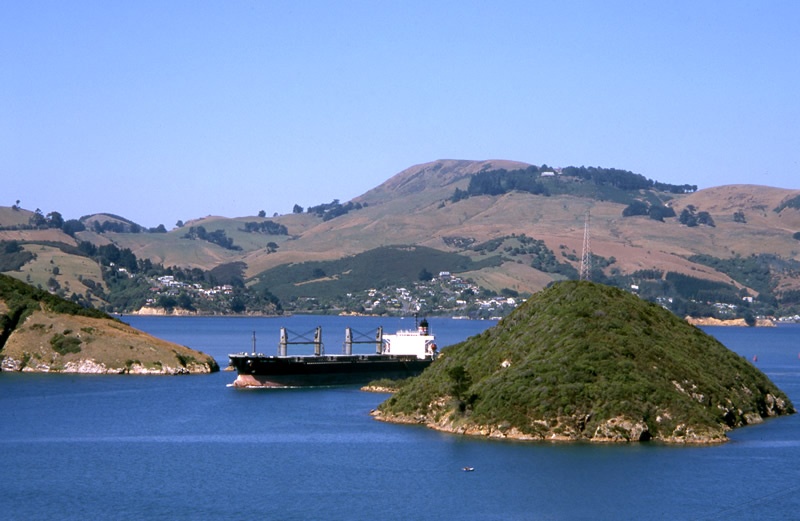
Victoria Channel (1881)
Gateway for commerce and industry
Think of this as a watery Old Coach Road, for the rules that applied to colonial land transport also worked here. Before modern trucks, forklifts and other heavy equipment, businesses preferred to load and discharge goods close to their warehouses. Unfortunately for them, Otago Harbour is an obstacle course. Between them, the Port Chalmers and Portobello peninsulas and Quarantine and Goat islands almost cut this long (22.5 km), narrow (5.21 km at its widest) inlet in two. The water is deep at the Lower Harbour (Port Chalmers) end but there is little flat land here. There was room to build a city at the Upper Harbour above the islands, but because the harbour petered out in a maze of narrow, silted channels, a shipping channel had to be dredged up to it.
This cost a fortune and pitted Port Chalmers politicians against their Dunedin counterparts, but on 30 December 1881 a cannon fired and a huge crowd watched the Union Steam Ship Company’s Penguin officially open the Channel. Not even the temporary grounding of the Penguin, just 749 tons and drawing only 4 m, dampened the enthusiasm of Otago Harbour Board chairman Keith Ramsay, who decreed that ‘it is no longer the “big ditch” but in honor [sic] of Her Gracious Majesty, has been duly christened the Victoria Channel’.
The name stuck, unlike the Penguin, and as finances permitted, the harbour board widened and deepened the channel to match the growing size of ships. Dunedinites celebrated whenever a new record-breaker berthed at their wharves. In January 1884, for example, hundreds cheered when the barque Mataura, drawing 5.2 m, berthed at Rattray Street wharf from London. Still, it was sometimes a struggle to keep up with the Conference Lines, which in the late 1890s tried to restrict calls to Port Chalmers. It took a newcomer, the Federal Steam Navigation Co., to send the 6-m draft Somerset up the channel in 1903 to change their minds. By 1907 two overseas ships were using Dunedin for every one that berthed at Port Chalmers.
Ironically, 93.5% of visiting vessels could use Victoria Channel in 1968-9, on the eve of the container revolution that gave Port Chalmers victory for good. Dunedin’s wharves are quieter these days, but Port Otago Ltd still keeps 8 m of water in the channel, making Dunedin accessible to ships of up to about 40,000 tons deadweight. The bulk carrier Global Frontier, lightly laden, set the current record in May 2012 – the 190-m long ship is 33,226 GRT (gross register tonnage, the permanently enclosed capacity) and has a deadweight of 57,298 tonnes.
Look for the guideposts, green to port and red to starboard. At low water, note the rock walls on the eastern side that still keep silt out of the channel.
Further information
This site is item number 57 on the History of New Zealand in 100 Places list.
Websites
Book
- Gavin McLean, Otago Harbour: currents of controversy, Otago Harbour Board, Dunedin, 1985




Community contributions